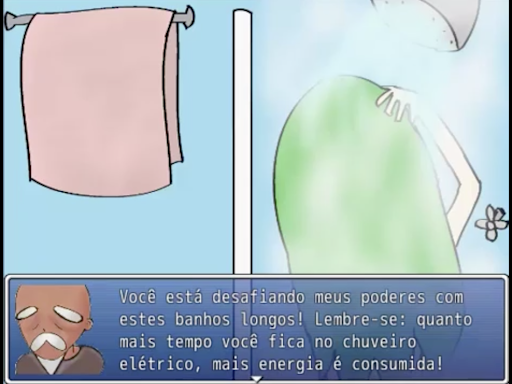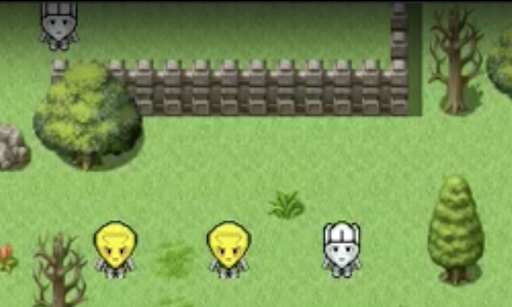Context & Problem
The energy is present in virtually all sectors of society and its use has been intensified throughout history. To this growth, social and environmental issues can be added, such as the intensification of the greenhouse effect and global warming. So, think about strategies that can problematize this issue, making people feel part of them and reflect on their practices should be considered and may be based on proposal of critical environmental education. One way to help to ensure that individuals can experience such problematic situations is through games. This can happen, because the games contribute to the students their interactivity and “to experience” the social and environmental problems even if virtually. In addition, the games for their motivational features can help in improving the critical view of students despite the energy problems. This case presents a proposal of creating an educational game it’s use as a practice for the so-called critical environmental education, and its development process.
Process
Once the relevance of the subject was clear and also the goal: to build a game about energy education, it was time to do a deep understanding in relation to existing games (benchmarking). The main idea of this step was to find new possibilities and offer an experience that could contribute to the rational use of energy.
Because of the time of the project, a secondary desk research was made by me – criteria to include and exclude the results were also considered and focused on: format, type of game, main audience, number of participants, objects, challenges, nature of approach (environmental – social – economic – technological), territorial and temporal scale, dimension (individual – family – groups – humanity).
*A paper about this research was published on Frontiers and Education, 2015.*
After that, the use of the games was also investigated by me, as the product was an educational object, it should be used in a specific context, which means that understand the best moments to use it could make a huge difference in the players/students experience.
As a result, seven games were analyzed, including how and when they were used.
The analysis result provided that there was a lack of games with the following characteristics: games for children focused on the individual actions, whose narrative is in impacts of the present moment and provide a connection between environment, social and technological aspects. Regarding the usage, it was observed that these were not problematizing, not creating spaces that favored the people to perceive themselves as actors in the energy problem, as well as people able to decide and propose changes in relation to consumption. In general they did not stimulate the collective dialogue, reflection and appreciation of the different knowledge of the participants, from the perspective of the education adopted in this work, it would make the experiences much more profitable and enriching. Furthermore, in most of them, when there was cooperation this was stimulated by competition between teams. Those same games dealt superficially with environmental issues and especially with social.
So, based on these results, the proposal for what the game would be and how to use it began to be drafted with a participation of two students and two teachers, leaded by me in person and also on virtual groups.
Aspects like narrative, game wow moment (lamp man with special music and timer), the construction of scenarios and challenges rescuing previous knowledge were much discussed. Also, the best moment to use the game, for example: before or after some specific content. The the consensus was: It must be fun with a logical sequence of contents while dealing with real problems.
I particularly invested a lot of time in the narrative and the specific content which was used as a base for the interface designer and the developer.
In relation to technology, aspects like financial limitation, limited knowledge of the developer (who was a beginner) and the bad internet connection on public schools were considered. Due this last, CD’s were recorded to be used by the students.

Brainstorming.
Solution
A story was created in which there were two main characters: a man (Energix Eletrix) who throws the challenges to a girl (Electrica) who had no commitment in the use of electricity. The main objective of the game is to make Electrica sensitive to the challenges presented and use her knowledge and the new ones presented to her to solve them, in order to give back electricity to the city where she lives since its consumption does not happen in a conscious way.
The game was planned to be used in the Sciences classes after an introduction to the Energy subject for kids in the ages of 11-13 years in Brazil. This is when children had energy as a mandatory educational content. The responsible teacher justified that this approach could make the students more interested in the content of the lessons and over the weeks gave tips to them about items that would likely be used in the game, her idea was get them excited about how to connect energy content to the game.


The game’s images.
It’s possible to watch on this video, in Portuguese, an advertisement of the game:
Results & Impact
This game was tested in a school, with children from 11 to 13 years in the city of Santo André, São Paulo, Brazil.
Some of the children did not like the game in the beginning because there were many texts to be read by them, but they ended up liking specially because of the music. To part of the children, the game made possible to think about how excessive energy consumption can harm the environment:
” I learned using the game that everybody can do small things in relation to the energy consumption like use one type of lamp in place of the other, do not use devices unnecessarily (…) I liked it.”
“In the begging the game is boring but them according the stages, it were more exciting and the lamp battle is so difficult”.





